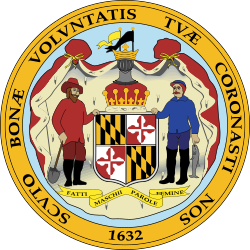A special election was held in Maryland's 2nd congressional district on April 18, 1796, to fill a vacancy left by the resignation of Gabriel Duvall (DR) on March 28, 1796.
A special election was held in Maryland's 2nd congressional district on April 18, 1796, to fill a vacancy left by the resignation of Gabriel Duvall (DR) on March 28, 1796.
| Candidate | Party | Votes [1] | Percent |
|---|---|---|---|
| Richard Sprigg, Jr. | Democratic-Republican | 142 | 100% |
Sprigg took his seat May 5, 1796 [2]
| Elections spanning two years (through 1879) |
| ||||
|---|---|---|---|---|---|
| Elections held in a single year (starting 1880) |
| ||||
| Elections by state |
| ||||
| Seat ratings | |||||
| Speaker elections | |||||
| Summaries | |||||
| | This Maryland elections-related article is a stub. You can help Wikipedia by expanding it. |
